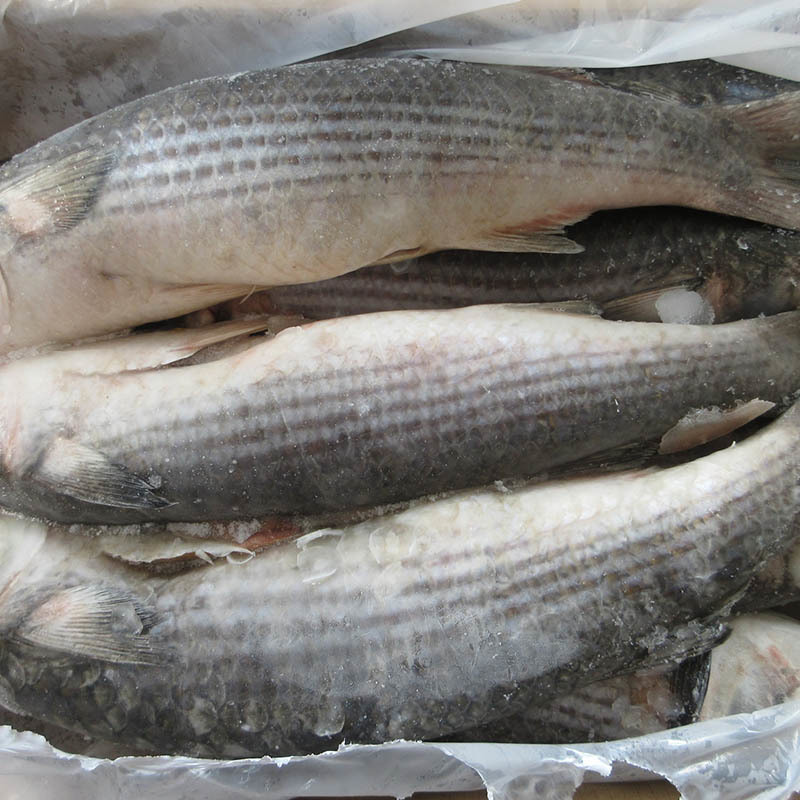The company's mission is to provide high-quality seafood to global buyers.
WhatsApp / WeChat : +8618659702877
The Integral Role of Giant Squid in Marine Ecosystems: An In-Depth Exploration
2025-08-01
The Integral Role of Giant Squid in Marine Ecosystems: An In-Depth Exploration
Table of Contents
Introduction to Giant Squid
Biological Characteristics of Giant Squid
Habitat and Distribution
Diet and Feeding Habits
The Giant Squid as Prey
Impact on Marine Ecosystems
Research and Conservation Efforts
Frequently Asked Questions
Conclusion
Introduction to Giant Squid
Giant squids
The Integral Role of Giant Squid in Marine Ecosystems: An In-Depth Exploration
Table of Contents
- Introduction to Giant Squid
- Biological Characteristics of Giant Squid
- Habitat and Distribution
- Diet and Feeding Habits
- The Giant Squid as Prey
- Impact on Marine Ecosystems
- Research and Conservation Efforts
- Frequently Asked Questions
- Conclusion
Introduction to Giant Squid
Giant squids (*Architeuthis dux*) are among the most intriguing and elusive creatures in the ocean. Often shrouded in mystery, these mollusks have captivated human imagination for centuries. Characterized by their impressive size, with some individuals exceeding 40 feet in length, giant squids represent a unique and pivotal component of marine life. This article explores their biology, behavior, and the critical role they play in maintaining the health of marine ecosystems.
Biological Characteristics of Giant Squid
Giant squids belong to the class Cephalopoda, which includes other fascinating species such as octopuses and cuttlefish. They possess a complex anatomy that supports their predatory lifestyle.
Physical Features
One of the most striking features of giant squids is their large, elongated bodies, which are adapted for a life spent in the deep sea. Their bodies are typically soft and gelatinous, helping them move efficiently through the water. The giant squid is equipped with eight arms and two long tentacles, which are lined with suckers that help capture prey.
Unique Adaptations
The giant squid's eyes are notably large, measuring up to 10 inches in diameter, making them some of the largest in the animal kingdom. This adaptation allows them to detect light in the dark depths of the ocean, where they primarily reside. Additionally, their ability to rapidly change color and texture is aided by specialized cells known as chromatophores, helping them communicate or evade predators.
Habitat and Distribution
Giant squids are typically found in deep ocean waters, where they inhabit the mesopelagic and bathypelagic zones. These areas are characterized by low light levels and high pressures.
Geographical Range
They are distributed globally, with sightings reported in various oceans, including the Atlantic, Pacific, and Indian Oceans. However, they tend to prefer deeper waters, often at depths ranging from 1,000 to 2,000 feet. Their preference for colder, deeper waters makes studying them particularly challenging.
Environmental Conditions
The habitats they occupy are crucial for their survival, as these environments provide abundant prey and optimal conditions for growth and reproduction. Factors such as temperature, salinity, and ocean currents play significant roles in determining their distribution.
Diet and Feeding Habits
The dietary habits of giant squids are complex and varied, reflecting their role as apex predators in their environment.
Prey Selection
Giant squids primarily feed on fish, crustaceans, and smaller squid species. Their impressive hunting strategy involves using their long tentacles to ensnare prey, which is then drawn towards their beak-like mouths. They are known to be opportunistic feeders, adapting their diet based on the availability of prey in their habitat.
Feeding Mechanism
Once prey is captured, giant squids employ a unique method of feeding that involves using their radula—a tongue-like structure equipped with tiny teeth—to break down food. This feeding mechanism allows them to consume large quantities, which is vital given their size and energy needs.
The Giant Squid as Prey
While giant squids are formidable predators, they are not without their own threats.
Natural Predators
Natural predators of giant squids include sperm whales, which are known for their ability to dive deep into the ocean to hunt these massive cephalopods. Other potential threats include deep-sea sharks and large fish species that share their habitat.
Role in the Food Chain
The giant squid plays a significant role in the oceanic food chain. As both predator and prey, they contribute to the balance of marine ecosystems. Their presence helps regulate populations of smaller fish and squid species, ensuring a diverse and stable ecosystem.
Impact on Marine Ecosystems
Understanding the role of giant squids in marine ecosystems is essential for recognizing their ecological significance.
Contribution to Biodiversity
Giant squids contribute to marine biodiversity by supporting a variety of other species within the food web. Their predation on smaller species helps maintain population balance, while also providing sustenance for larger predators.
Nutrient Cycling
Additionally, giant squids play a vital role in nutrient cycling within the ocean. As they consume prey and subsequently become prey themselves, they facilitate the transfer of energy and nutrients throughout the marine environment, promoting overall ecosystem health.
Research and Conservation Efforts
Despite their ecological importance, giant squids remain relatively understudied due to the challenges associated with observing them in their deep-sea habitats.
Scientific Research
Recent advancements in technology, such as remote-operated vehicles (ROVs) and deep-sea submersibles, have facilitated new research opportunities. Scientists are now better equipped to study giant squids in their natural environment, leading to a deeper understanding of their behavior, biology, and ecological role.
Conservation Initiatives
Conservation efforts aimed at protecting giant squid populations are crucial, especially as oceanic changes due to climate change and human activity threaten their habitats. Initiatives focused on sustainable fishing practices and habitat preservation are necessary to ensure the long-term survival of these extraordinary creatures.
Frequently Asked Questions
1. How big can a giant squid get?
Giant squids can grow up to 43 feet long, although the average length is typically around 30 feet. Their size can vary based on environmental factors and available food sources.
2. Where are giant squids commonly found?
Giant squids are found in deep ocean waters around the world, particularly in the Atlantic, Pacific, and Indian Oceans, at depths ranging from 1,000 to 2,000 feet.
3. What do giant squids eat?
Giant squids primarily feed on fish, crustaceans, and smaller squid species, using their long tentacles to capture prey.
4. Are giant squids endangered?
While they are not classified as endangered, giant squids face threats from overfishing and habitat destruction, which can impact their populations. Conservation efforts are essential for their protection.
5. Can giant squids see in the dark?
Yes, giant squids have large eyes that enable them to detect light in the dark ocean depths, helping them hunt efficiently in their natural habitat.
Conclusion
Giant squids are not only fascinating creatures but also play a crucial role in the health and balance of marine ecosystems. Their unique adaptations and predatory behavior contribute significantly to ocean biodiversity and nutrient cycling. As we continue to research and understand these enigmatic beings, it becomes increasingly important to prioritize their conservation to ensure that the mysteries of the deep sea remain part of our planet's rich tapestry of life. Through awareness and proactive measures, we can protect giant squids and the intricate ecosystems they inhabit, fostering a healthier ocean for future generations.
Giant Squid/Peru Squid
RELEVANT INFORMATION
The Integral Role of Giant Squid in Marine Ecosystems: An In-Depth Exploration
The Integral Role of Giant Squid in Marine Ecosystems: An In-Depth Exploration
Table of Contents
Introduction to Giant Squid
Biological Characteristics of Giant Squid
Habitat and Distribution
Diet and Feeding Habits
The Giant Squid as Prey
Impact on Marine Ecosystems
Research and Conservation Efforts
Frequently Asked Questions
Conclusion
Introduction to Giant Squid
Giant squids
2025-08-01
The Rising Tide of the Squid Industry: Trends and Insights
Explore the latest trends in the squid industry, from culinary innovations to market dynamics.
2025-07-31
Understanding Frozen Red Pacu: A Nutritional Powerhouse in Convenience Food
---
The frozen red pacu is a remarkable species of fish that has gained popularity in recent years, especially in the realm of convenient and frozen foods. Native to the river systems of South America, particularly the Amazon and Orinoco basins, the red pacu is known for its mild flavor and firm texture, making it an ideal candidate for various culinary applications.
One of the primary advantages
2025-07-29







